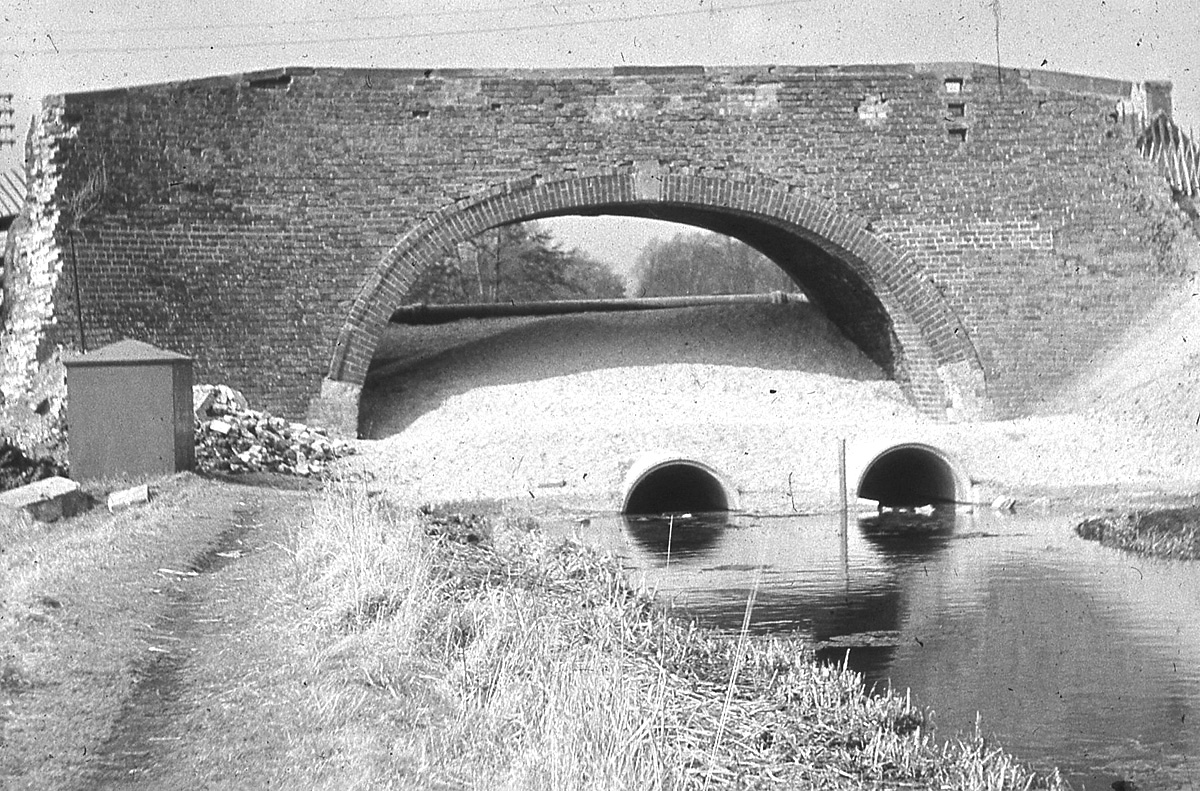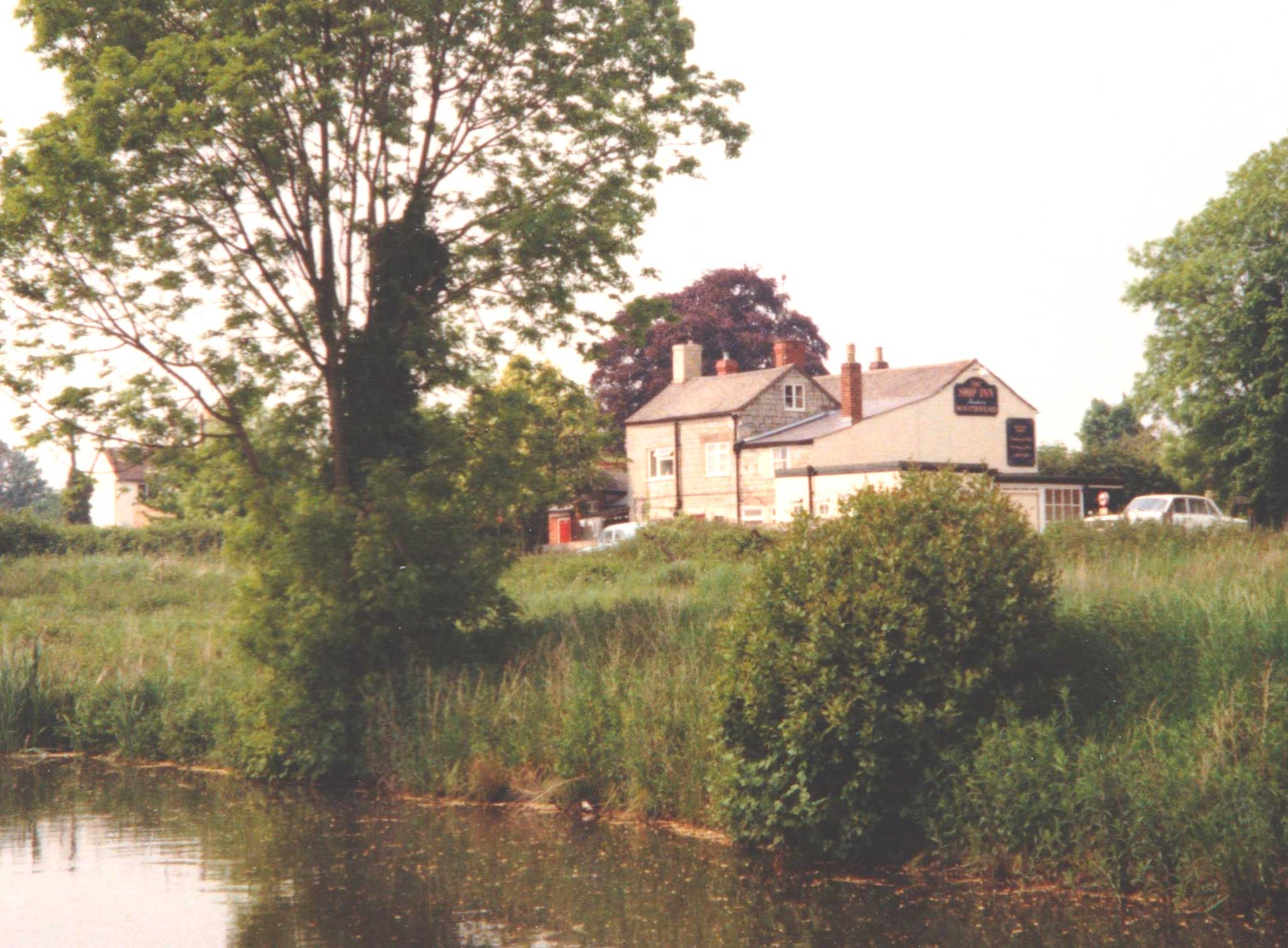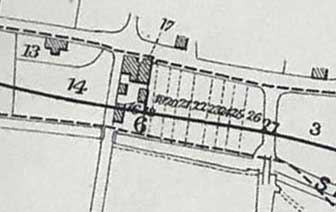Stonehouse Bridge carried the road south from Stonehouse, passing the Ship Inn on the Cross


The bridge to the east of Stonehouse Wharf is better known to road users as Downton Road Bridge as it carries the road to Stanley Downton. It was originally a narrow hump back structure like most others on the canal.
As traffic increased in the twentieth century, there was growing pressure to flatten and widen such bridges, and this became a prime reason for closing the canal in 1954.
The image shows the bridge being replaced by a causeway with pipes through it to allow a flow of water. This causeway was replaced by the current bridge in 1999 to facilitate the restoration of the canal.


Originally, there were two buildings beside Stonehouse Cross with a narrow garden running down to the canal. By the 1840s, the main occupier was a coal merchant who ran a boat bringing coal from the midlands, and he also sold beer. The beer business evidently prospered, and by 1861 the two buildings had become known as the Ship Inn.
Over the years, the pub was no doubt visited by many passing boatmen, and it also served travellers on the turnpike road. However, when the Stonehouse & Nailsworth Railway came through in the late 1860s, it cut through the garden behind the pub and a house for the level crossing keeper was built on the residual plot near the canal.
The Ship Inn continued to flourish long after the railway closed, but it was eventually demolished in 1997 to allow widening of the main road after the construction of the Ebley Bypass.


Although the Ship Inn was demolished, it has not been forgotten, and its original garden, together with the adjoining field to the east, has now become known as the Ship Inn Site.
The plan for the Stonehouse & Nailsworth Railway shows that in the 1860s, the field was divided into nine strips, each about 10 yards wide and all being rented to local residents as allotments. Building the railway interrupted this particular layout, but the land between the railway and the canal was still referred to as 'garden ground' in 1909 and appears as such in a 1936 aerial photo.
Campaigners hope that at least part of this field can become an attractive canal-side area for the benefit of the community and that this will encourage waterborne travelers to stop and visit Stonehouse.
Date of building the current Stonehouse Bridge from plaque on bridge.
Information about the Ship Inn from the Stonehouse History Group.
Use of the adjoining field for allotments from Q/RUm/304, Lloyd George Survey c1909 and aerial photo 1936 (Stonehouse History Group).